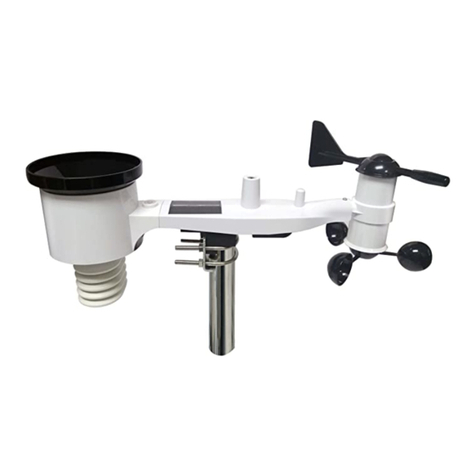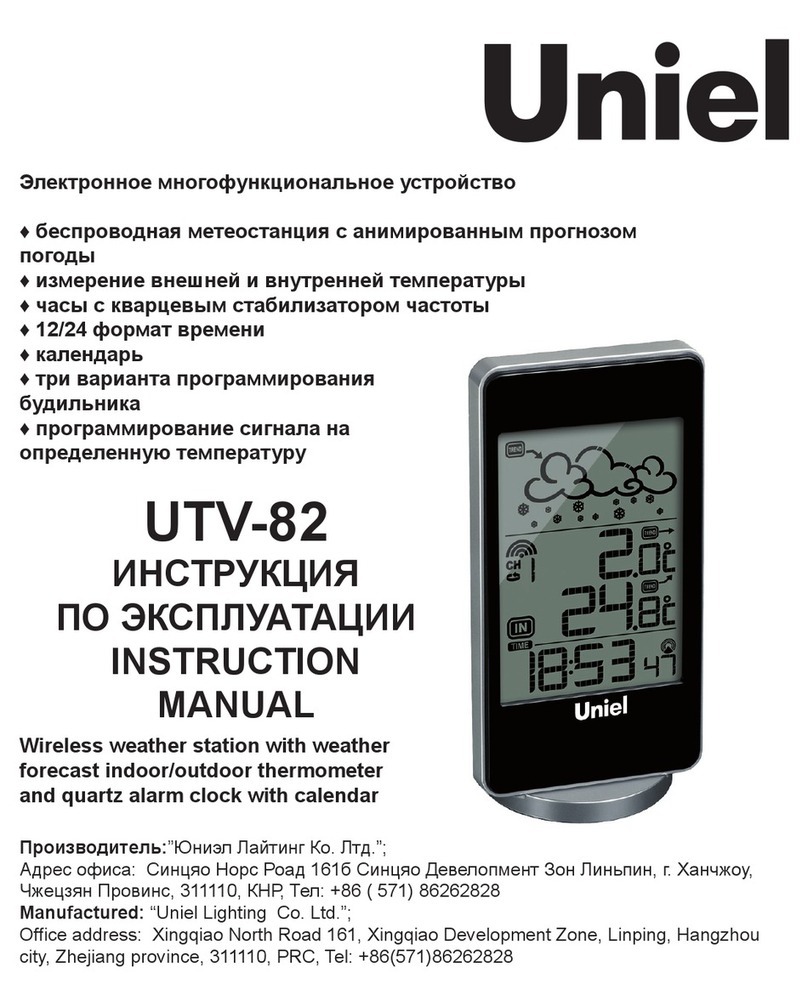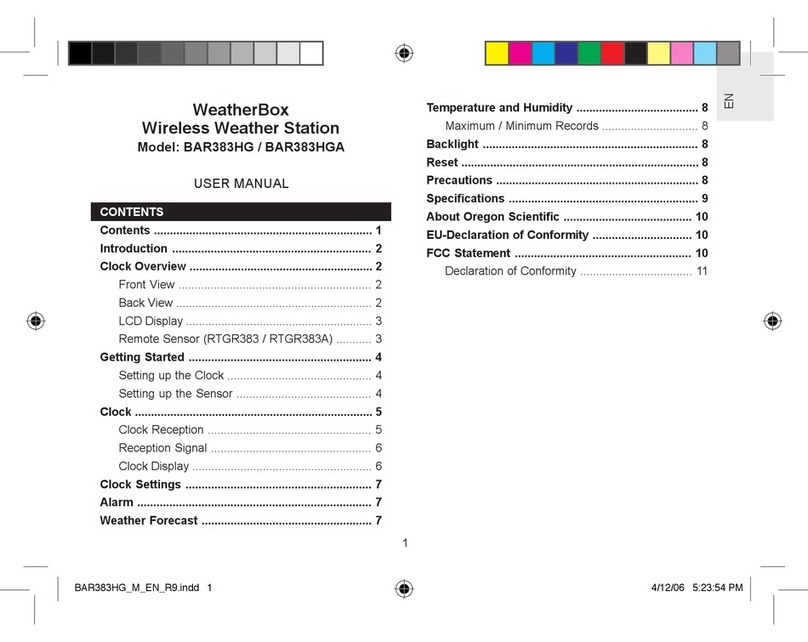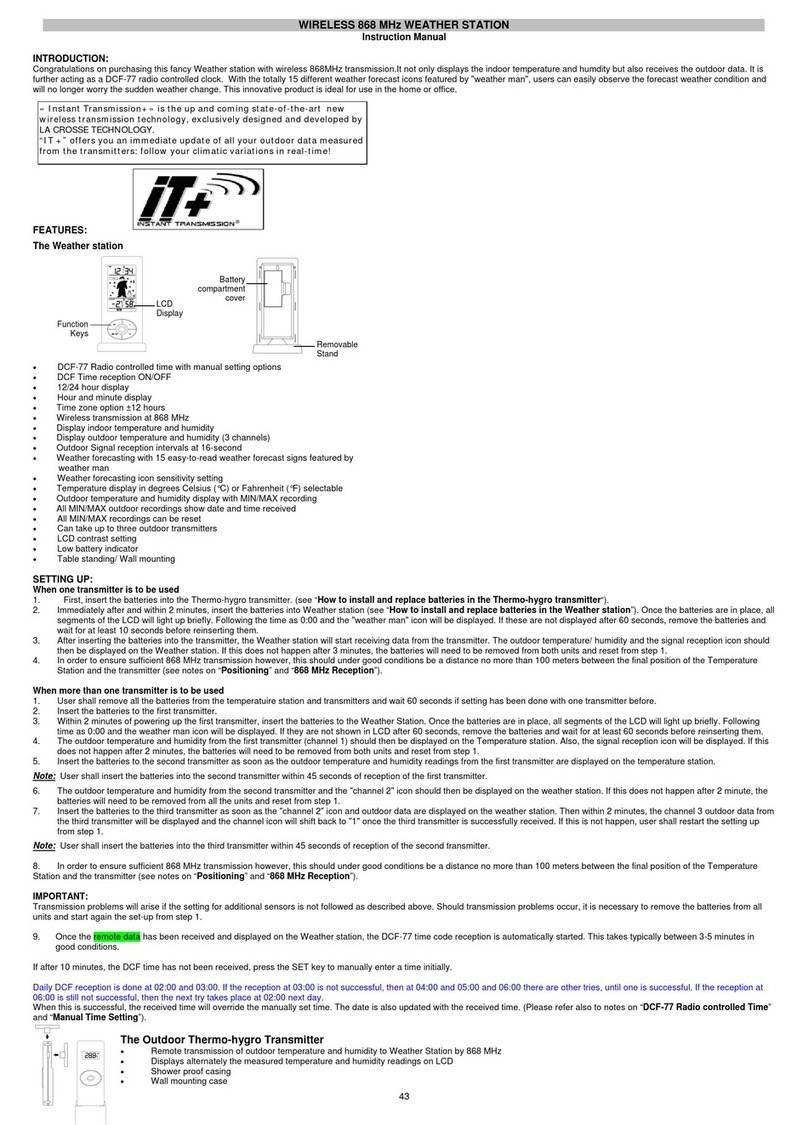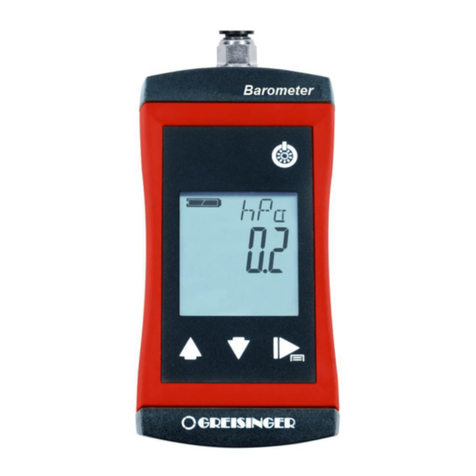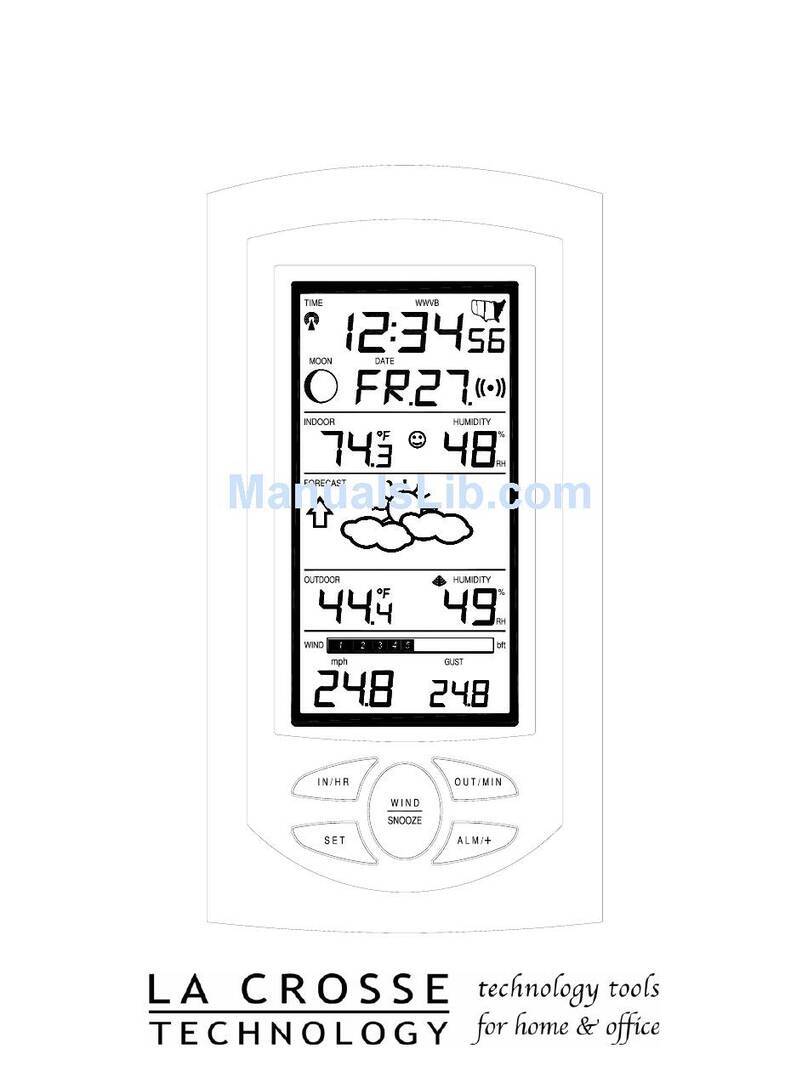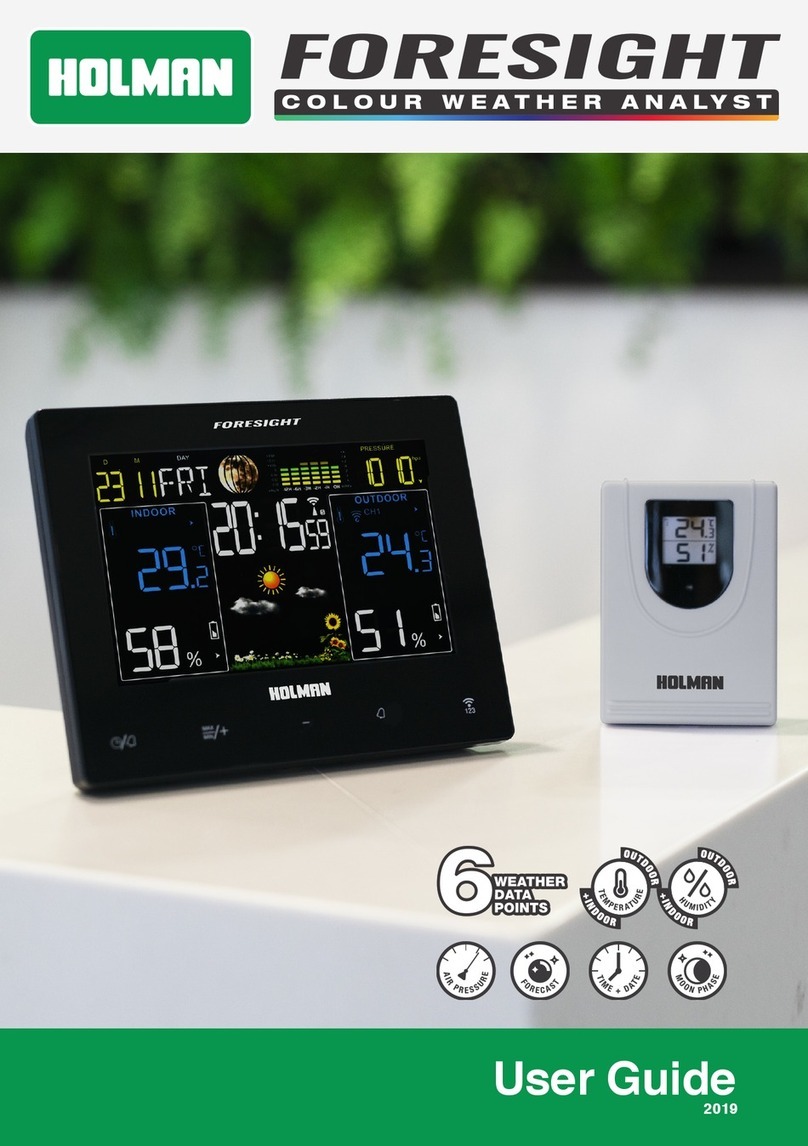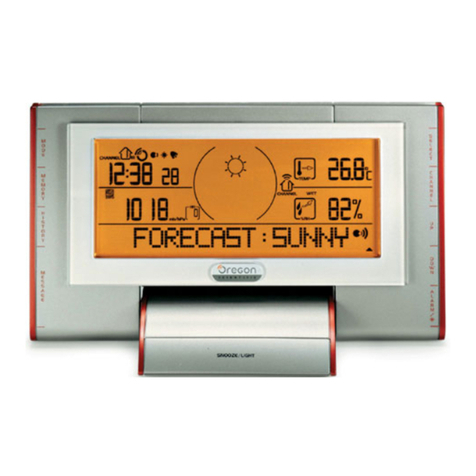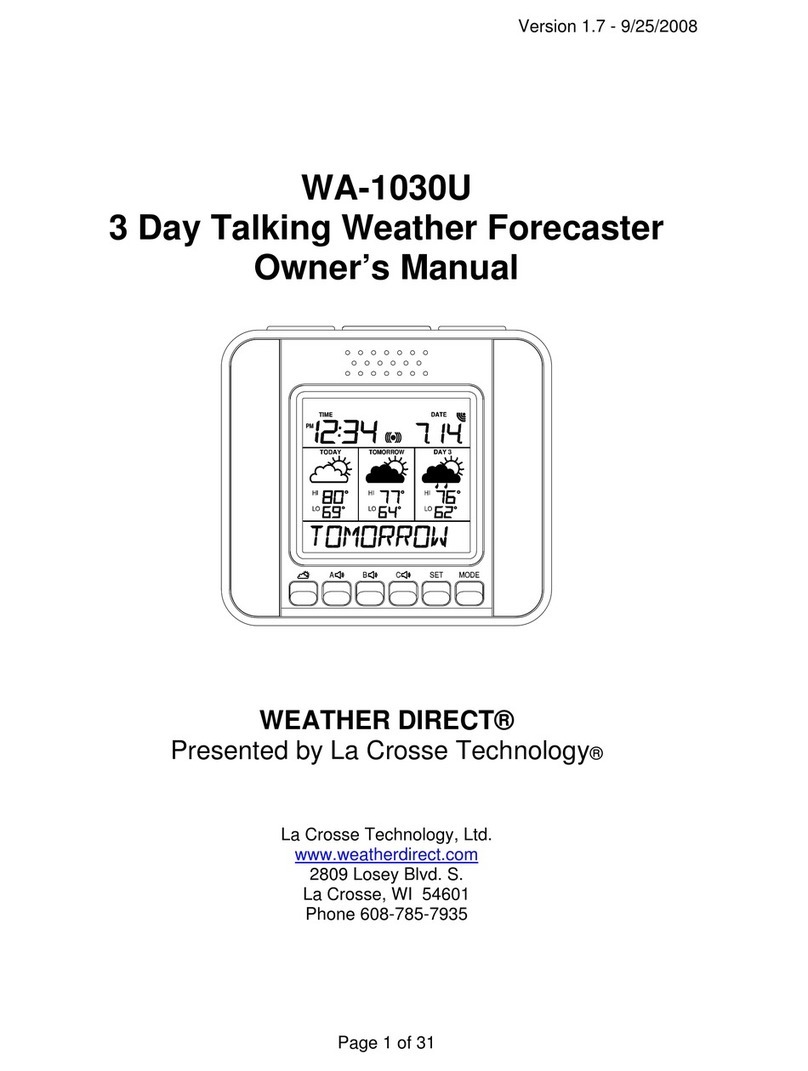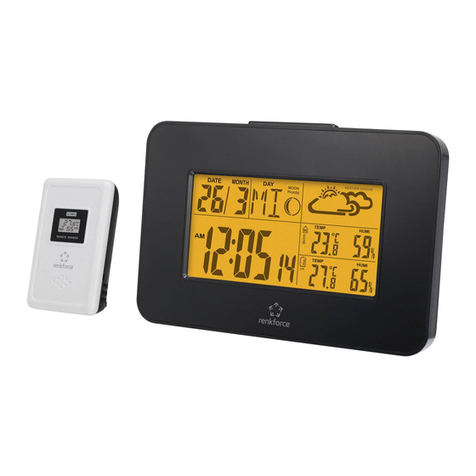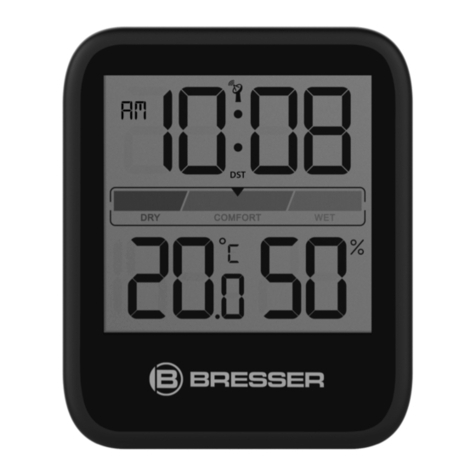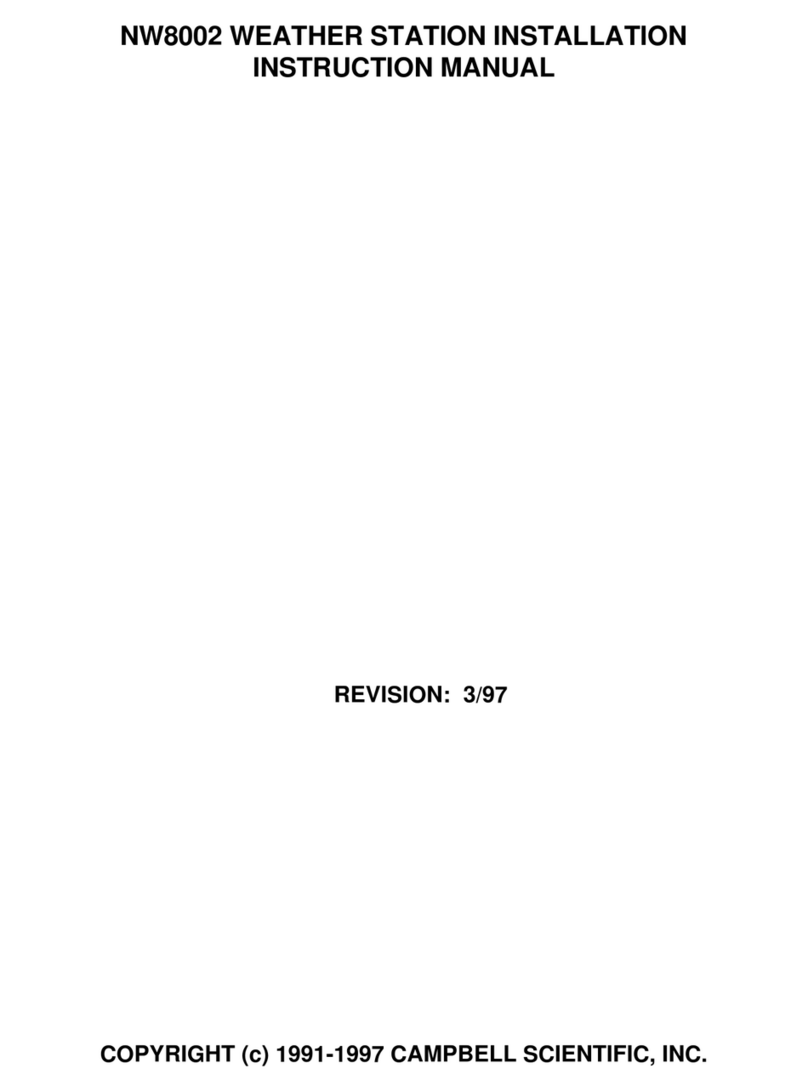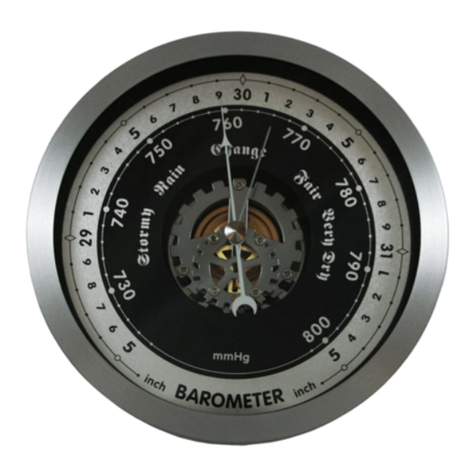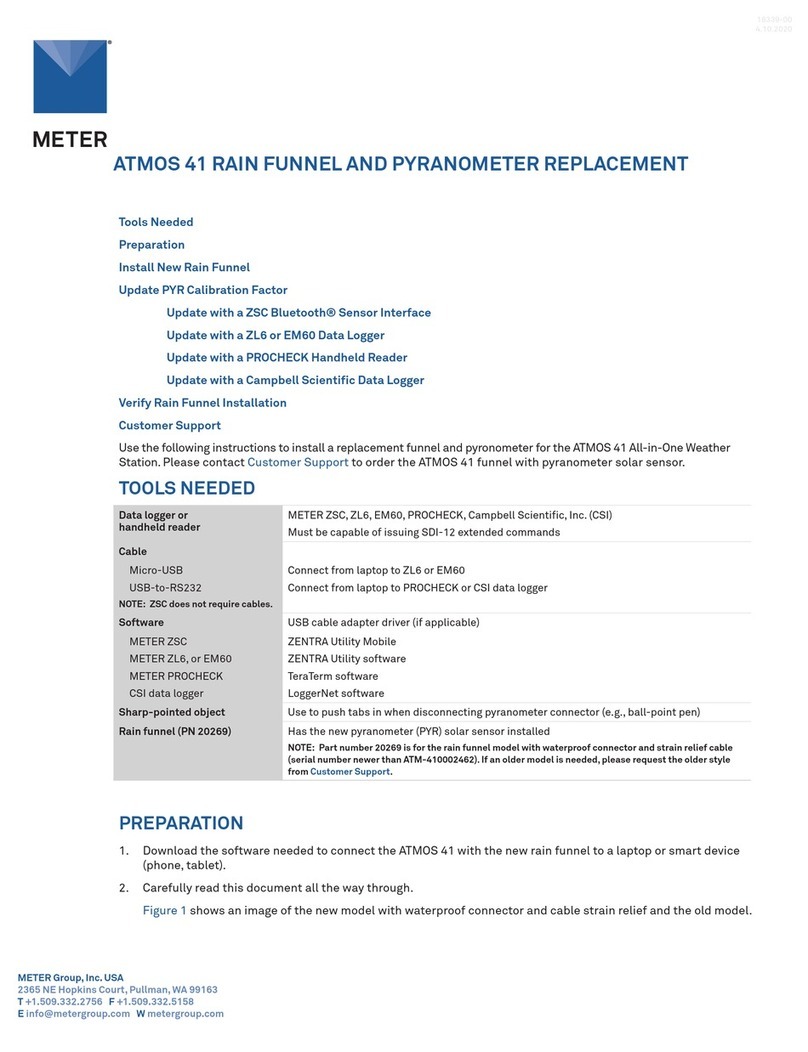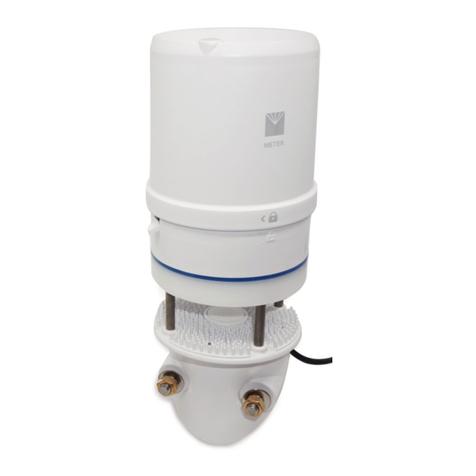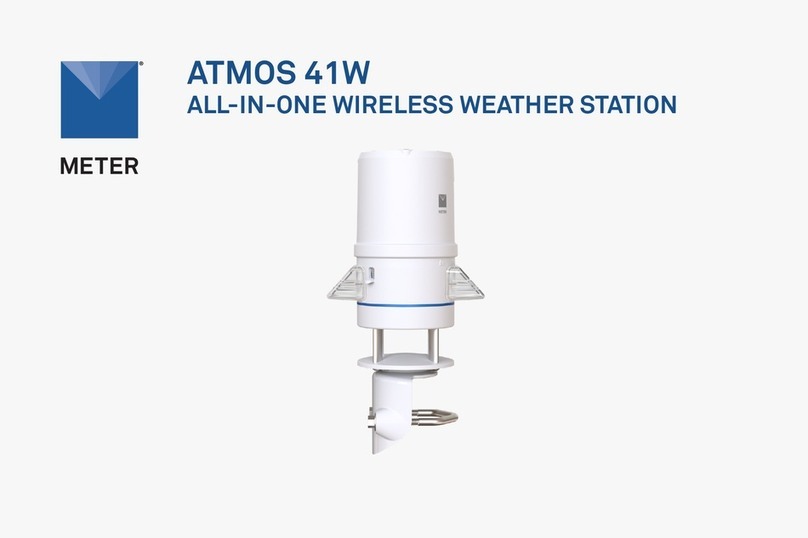
4
OPERATION
2.2 CONNECTING
The ATMOS41 All-in-One Weather Station works most efficiently with ZENTRA or EM60 data
loggers. This system will not work with legacy data loggers (Decagon Em5, Em5B, Em50,
Em50R, Em50G) because the ATMOS41 has too many output parameters (previously limited
to three). The sensor can also be used with other data loggers, such as those from Campbell
Scientific, Inc. For extensive directions on how to integrate the sensor into third-party
loggers, refer to the ATMOS41 Integrator Guide.
The ATMOS41 sensor requires excitation voltages in the range of 3.6 to 15.0 VDC and
operates at 2.8 to 5.5-VDC level for data communication. The ATMOS41 communicates
using the SDI-12 communication protocol and should be compatible with any
SDI-12 compatible data acquisition device capable of the ATMOS41 excitation range. See
the ATMOS41 Integrator Guide for details on interfacing with data acquisition systems.
The standard ATMOS41 comes with a 3.5-mm stereo plug connector (Figure1) to facilitate
easy connection with METER loggers. ATMOS41 sensors may be ordered with stripped and
tinned (pigtail) lead wires for use with screw terminals when connecting to some third-party
loggers (Section 2.2.2).
Ground
Data
Power
3.5-mm stereo plug connector wiring
The ATMOS41 comes standard with a 5-m cable. It may be purchased with custom cable
lengths for an additional fee (on a per-meter basis). METER has successfully tested digital
communication on cable lengths up to 1,000 m (3,200 ft). This option eliminates the need
for splicing the cable (a possible failure point). However, the maximum recommended
length is 75 m.
2.2.1 CONNECT TO METER DATA LOGGER
The ATMOS41 works seamlessly with ZENTRA or EM60 data loggers. Check the METER
downloads webpage (metergroup.com/downloads) for the most recent data logger
firmware. Logger configuration may be done using either ZENTRA Utility (desktop and
mobile application) or ZENTRA Cloud (web-based application for cell-enabled ZENTRA
data loggers).
NOTE: This system will not work with legacy data loggers (Decagon Em5, Em5B, Em50,Em50R, Em50G).
1. Plug the 3.5-mm stereo plug connector into one of the sensor ports on the logger.
2. Once the ATMOS41 has been connected to a ZENTRA or EM60 data logger, using the
appropriate software application, congure the chosen logger port for the ATMOS41.
3. Set the measurement interval.





















